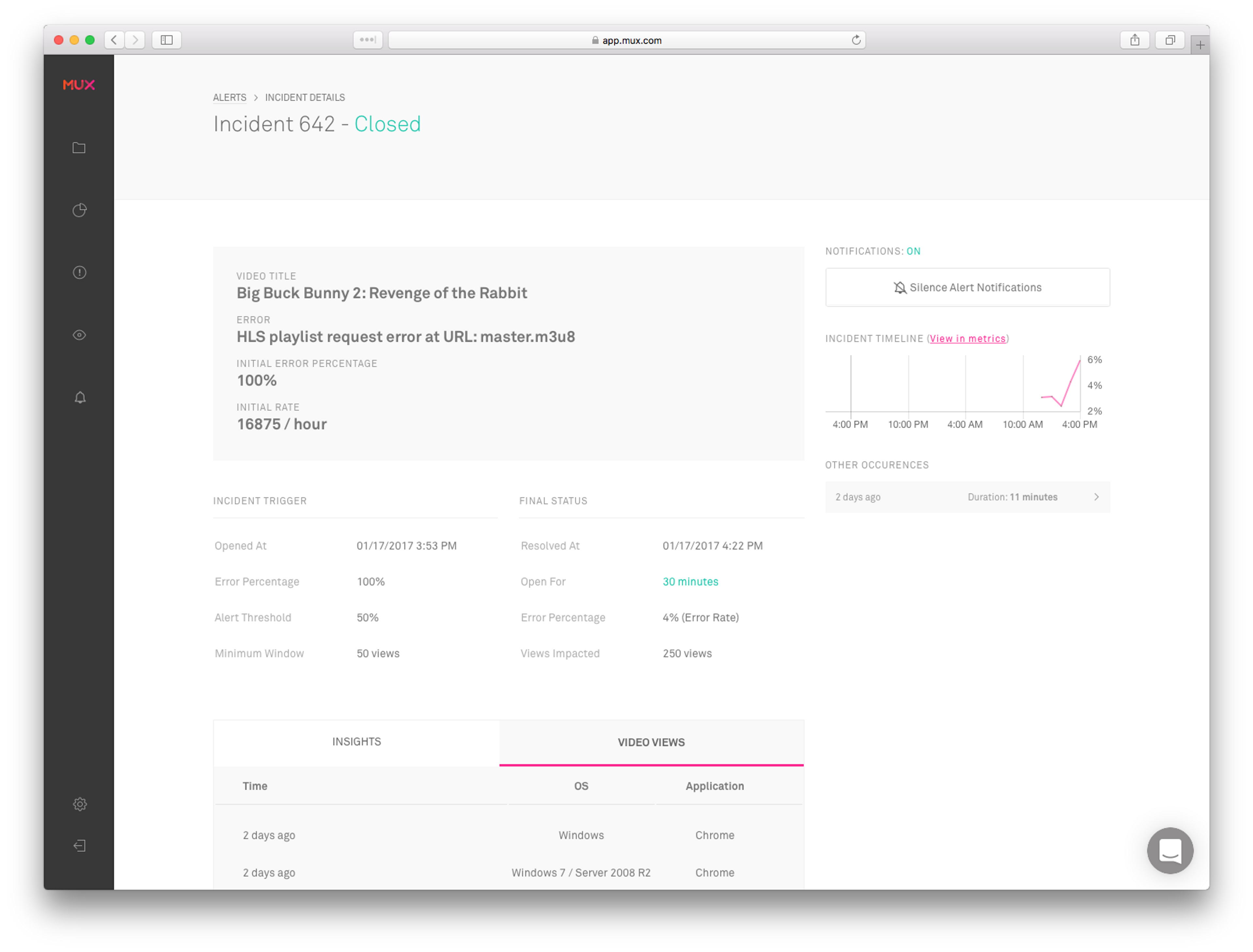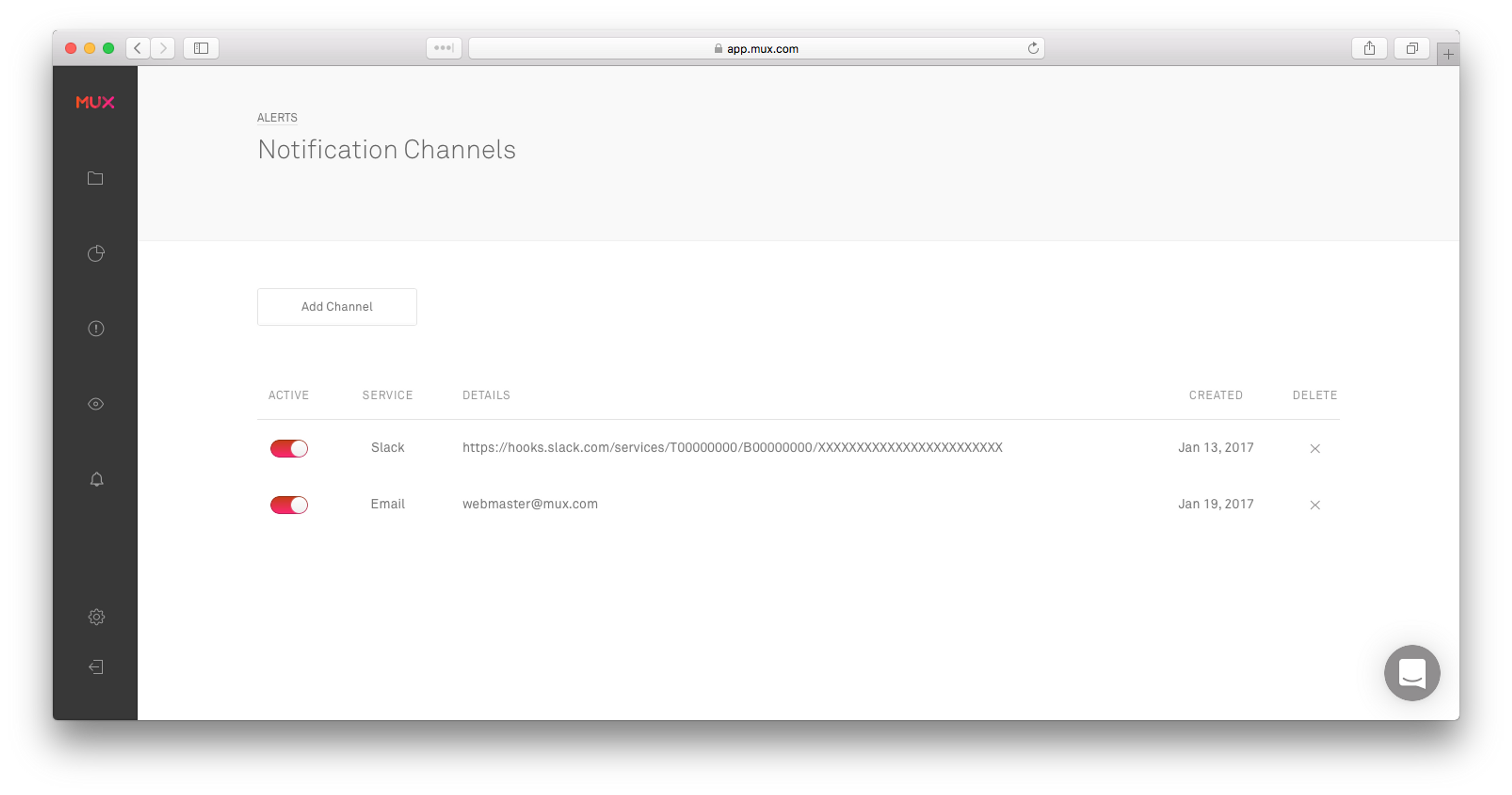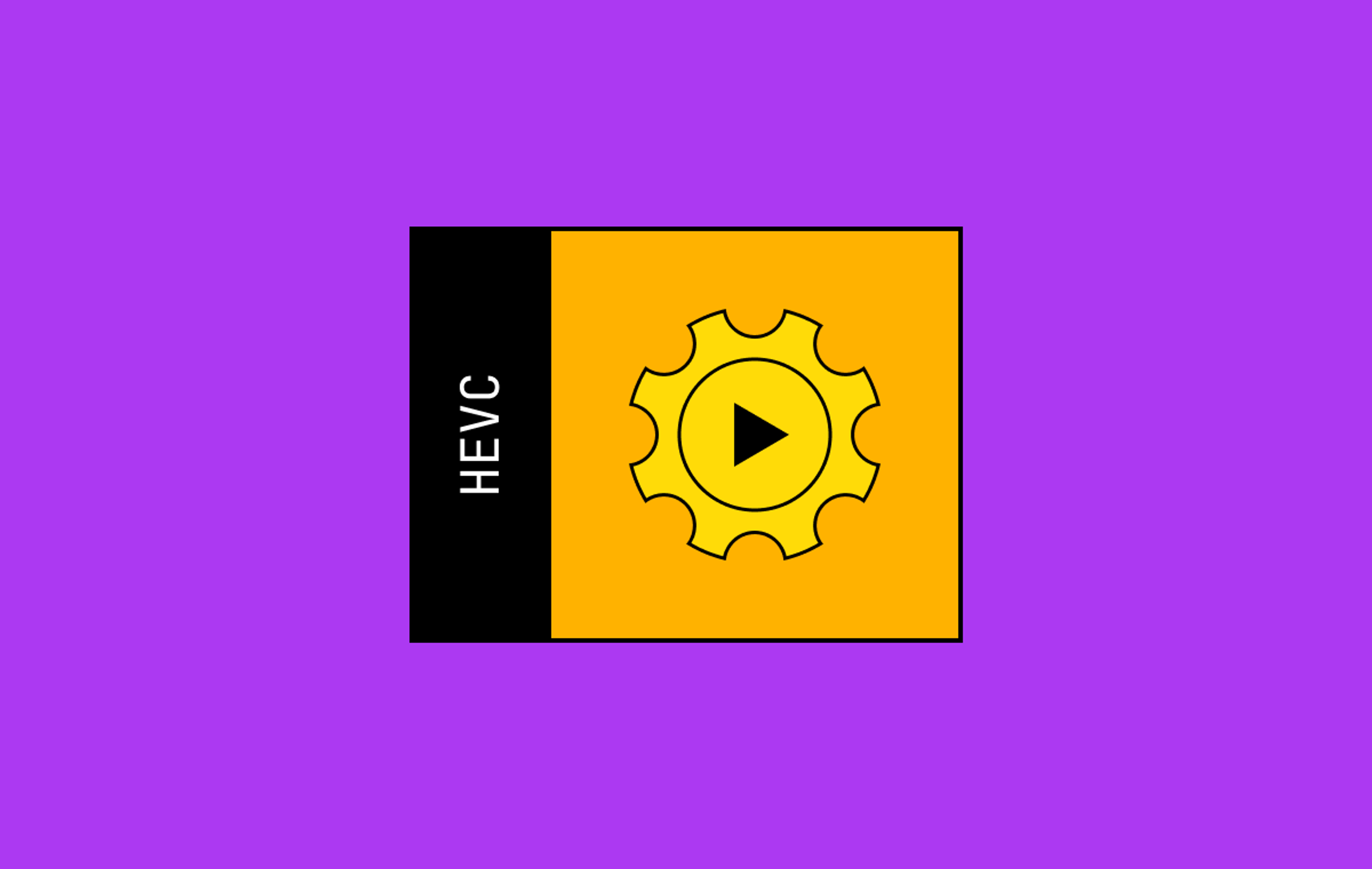One of the core beliefs we have at Mux is that everything we do should help customers improve their platform and viewer experience. We help them understand the overall health of their video delivery platform and what the experience is like for their viewers. More often than not, the insights we provide are things that people have never had access to before. However, we started to hear a pretty common question from our customers...
But how will I know if something's going wrong when I'm not looking at our dashboard?
To make things more complicated, a single video might be failing at a significant rate, but still not have enough of an impact in the overall metrics to be noticeable at the platform level. This means that even if someone was digging into their platform's metrics right when a title was having problems, they still might not see that there's an issue.
To address this, we're thrilled to announce something we've been thinking about since before we wrote our first line of code: Alerting! 🎉

What's the big deal?
When we first started thinking about alerting, the obvious approach was to just allow customers to manually set thresholds. This is what a lot of alerting platforms end up doing, but we found this would either end up dropping valuable data on the floor or being far too noisy. You could try to improve the situation by constantly tuning the thresholds, but ultimately the result of either situation is the same: you stop trusting and/or caring about the alerts that come out of that platform. We didn't feel like we could take the easy way out because we wanted every alert we send to matter.
To solve this problem, the venerable Scott Kidder put together a system using Flink and machine learning. This system allows us to provide actionable alerts to customers for scenarios like abnormal error rates in a single video title or the overall rate of a certain error. Don't worry, we'll post a follow-up with a technical writeup on the system, but for now you'll have to take some hand waving and believe that what's happening behind the scenes is Really Cool Data Science™.

Setting up alerts for your properties
When you log into your account, you'll see a shiny new "Alerts" section in the navigation menu. Whether or not you enable receiving alerts, we're still constantly analyzing your property for potential incidents, so don't be alarmed if you already see open or closed incidents in the interface.

Once you click through to Notification Settings you'll be able to add as many notification channels as you'd like. We support receiving alerts via Slack webhook and email right now. In the near future, we're planning to add more channels, such as PagerDuty, but we'll also add additional alerts and, of course, we're constantly working to improve the algorithms behind the scenes. If you have other channels or suggestions in mind, please let us know!
If you've already got an account, alerting is live and ready to use right now, so go forth and alert! If you don't have an account yet and this sounds like something you need in your life, get in touch.
❤️ - Matt



